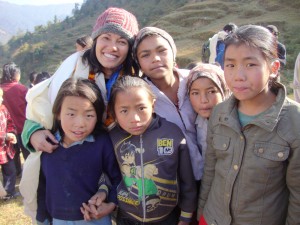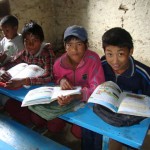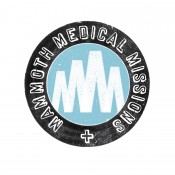Scouting Mission to Phapre, Nepal

Dr. Escudero with village girls
We arrived in Katmandu after 2 days of air travel. This was my first time in Nepal. I was amazed at the size of the city as well as the bustle and energy it created. After a brief stay in the capital, the three of us, myself, Rachel Georgeson and Sierra Bourne, along with our guide Wangdowa Sherpa, helicoptered into the remote village of Phapre. There was an amazing difference from the capital. There were abundant stepped plateaus with crops of corn, mustard greens, potatoes, cows and grazing goats. The people were awaiting our arrival and greeted us with a heartfelt welcome.
We were in Phapre for 3 days with the objective of finding out what the medical needs of the village might be and how best we might serve them.
The village has electricity 16 hours a day (4pm-8am via hydropower) and an abundant source of water available from common wells. The people use cooking fires in the home without a chimney, so that smoke flows freely throughout the house. There are no roads, so people travel via trails to their fields, to collect wood, and to get water. There is a small school where children learn the basics of reading and writing.

Village schoolboys
We found that the villagers need antibiotics for skin, eye, ear and respiratory infections, anti-inflammatory agents for chronic back and knee pain, GI meds for stomach ailments and dental care. In addition, if we could help build chimneys to move the smoke out of the houses, this could help decrease the amount of eye, ear and respiratory infections.
After completing our observations, we took 3 days to hike to Jiri, followed by an 8 hour drive back to Kathmandu. On the way home, we agreed that Phapre is filled with warm, friendly people with many needs. They could certainly benefit from a medical mission. Complicated logistics, enormous distance from major medical facilities, and the difficulty of establishing long-term care must be duly considered.






